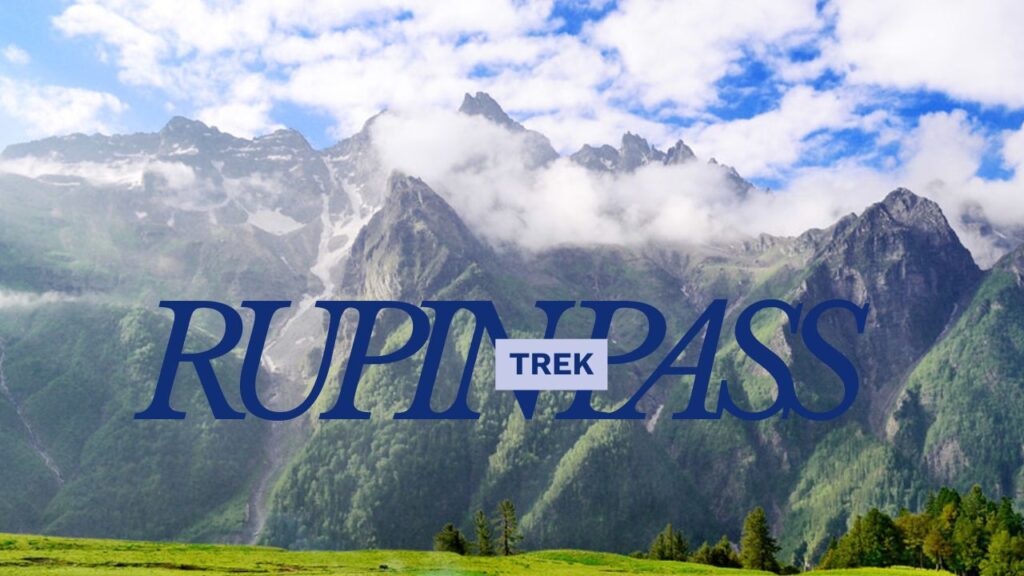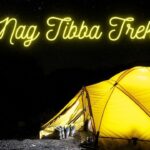Table of Contents
Rupin Pass Trek 2025 – Everything You Need to Know about this Himalayan Adventure of a Lifetime
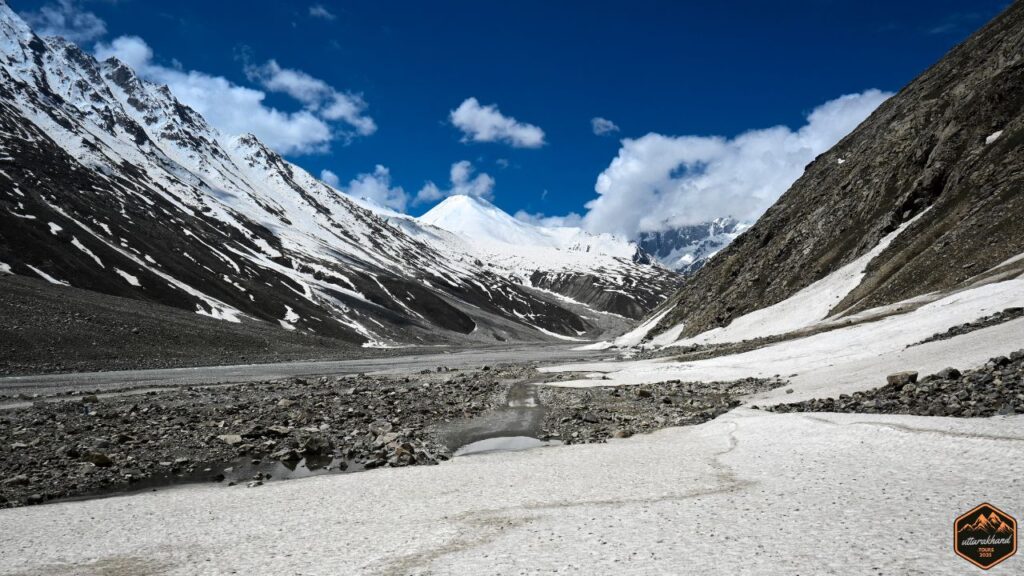
Trekking in the Rupin Pass Region Screensaver Situated in the Garhwal Himalayas and trekking into Himachal Pradesh, the Rupin Pass Trek is a trek enthusiastic adventure lovers should not miss: a 52 km trek that keeps them thrilled all the time with its ever-changing natural sceneries and the surprises awaiting them.
Located at an elevation of 4,650 m (15,250 ft), Rupin Pass treks offer unobstructed views of high snow peaks, meadows of the upper Himalayas with close sights of the glaciers and snowbridge, makes this one of the gorgeous trek in India. The moderate-to-difficult walk begins from Dhaula in Uttarakhand and concludes at Sangla, Himachal Pradesh, making it ideal for trekkers with some prior experience who want a bit of a challenge, some beautiful landscapes and a chance to soak in a new culture.
This 7–8-day hike from the turquoise Rupin River to picturesque villages like Sewa is a rollercoaster of unexpected sights. This post explains everything about itinerary, best time to do Rupin pass trek and cultural highlights and tips to to plan Rupin Pass Trek 2025.
About the Rupin Pass Trek
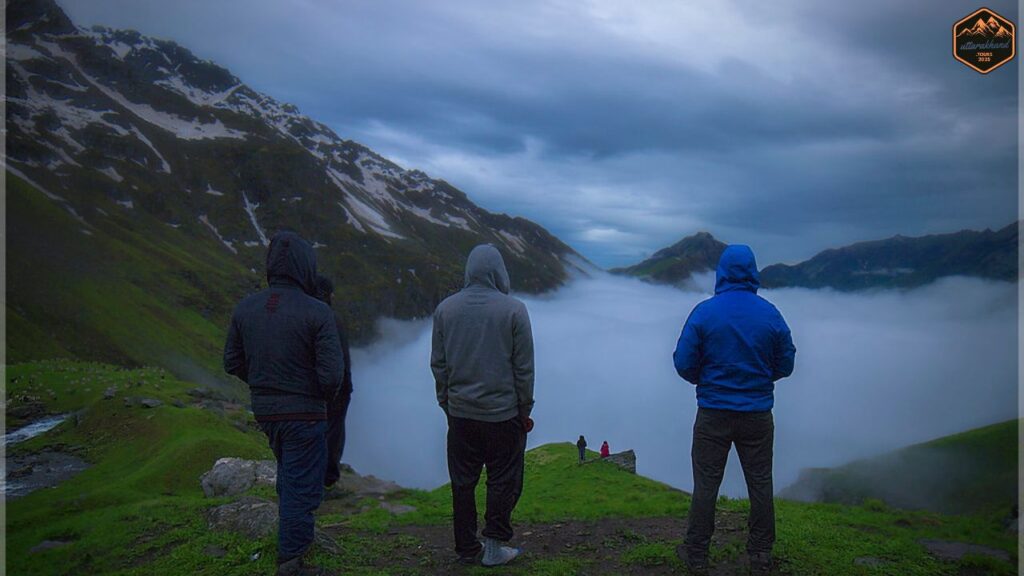
Rupin Pass Trek is a high altitude trek that begins from Dhaula in Uttarakhand at 1,550 meters and ends at Sangla in Himachal Pradesh at 2,680 meters and the highest altitude one reaches is some 4,650 meters at the Rupin Pass. The trek is known for its dramatic landscape consisting of thick pine forests, open meadows, glacial valleys and the shimmering Rupin river. That honor goes to Banjo-Kazooie, which is filled with surprise waterfalls and snow bridges around every corner, and is an absolute visual delight.
A moderate- to difficult-rated trek for those with some experience, the route presents challenges such as steep ascents and high-altitude camping. Some of the important sites are the Kinnaur Temple at Sewa, the beautiful village of Jhaka, and the view of the Kinner Kailash range. Bridging the Garhwali and Kinnauri cultures, the trek combines thrill and culture. This 7–8-day trek is reachable and exciting high-altitude Himalayan travel for anyone in search of a memorable getaway.
Day-wise Itinerary of Rupin Pass Travelogue
Day 1: Dehradun to Dhaula (200 km, 8–10 hours by road)
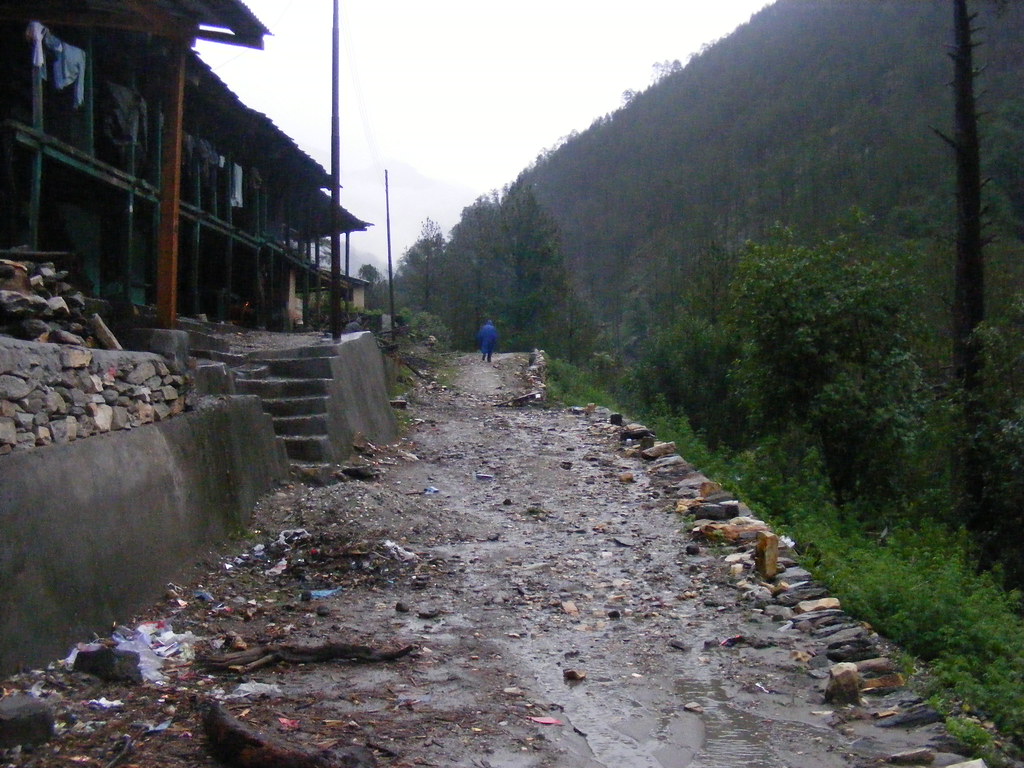
Commence your Rupin Pass Trek on a beautiful long drive from Dehradun to Dhaula which takes around 8-10 hours covering 200 km. The route meanders through Mussoorie, Purola, and Mori and offers views of pine forests and the Tons River valley. Dhaula, 1,550 meters, is a delightful village that is the starting point of the trek.
Get there by evening and check into a guesthouse or homestay, enjoying a Garhwali meal. Only BSNL mobile network, so pack spare batteries and change, the last ATM is in Purola. Pre arrange transport through trekker agencies for ease, shared taxi will cost INR 1,500-2,000 one way. Get a good night’s rest to be ready for the adventure, and to absorb the peace of this Himalayan hamlet.
Day 2: Dhaula to Sewa (Trek: – 10 km, 5–6 hours)
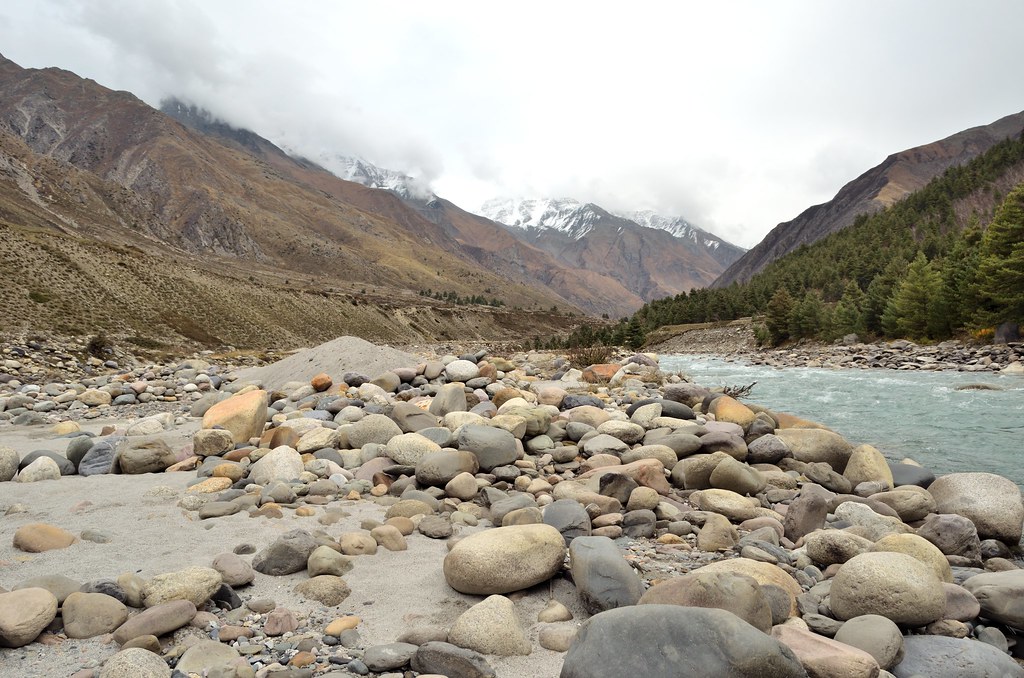
Walk 10 km from Dhaula to Sewa at 1,920 meters along the Rupin River through apple orchards and pine forests. The path is a gradual climb featuring colorful meadows and peaceful river views. Merging both Uttarakhand and Himachal Pradesh, Sewa is also noted for the Kinnaur Temple — an architectural gem with beautiful wood carvings.
Camp by the river or choose a home stay and tuck into local dishes such as rajma and roti. And trekkers are enchanted from the start by the trail’s beauty, with waterfalls and wooden bridges. All you’ll need to take with you is a refillable water bottle and a few energy snacks, as there are few facilities, so take advantage of the peaceful and serene atmosphere of the himalayas.
Day 3: Sewa to Jhaka (12 km, 6– 7 Hours trek)
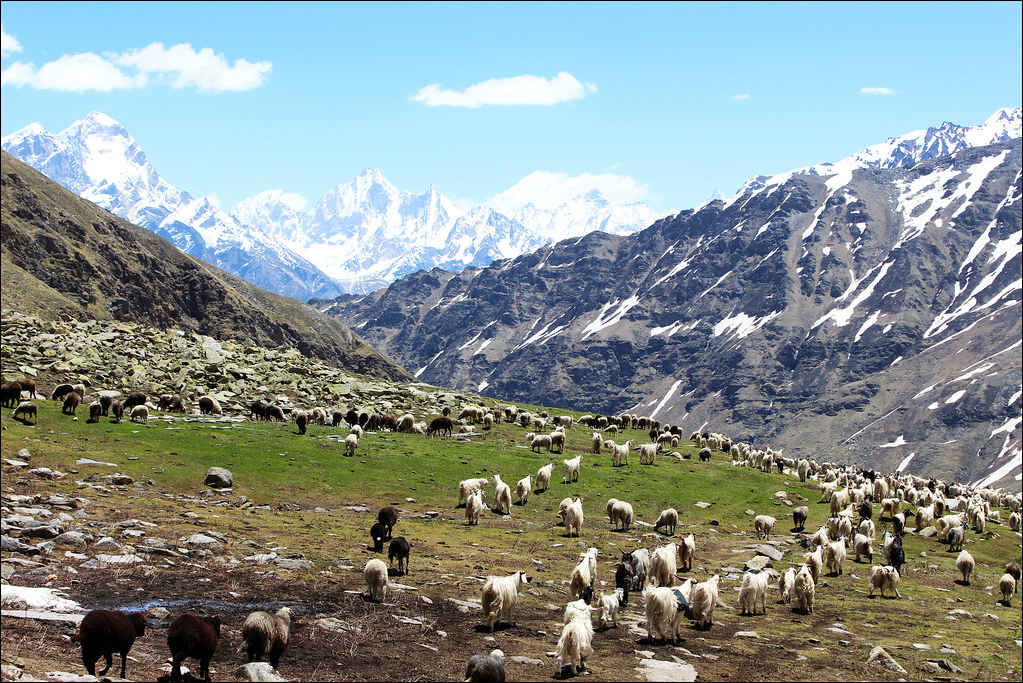
Trek 12 km to Jhaka, at 2,700 meters, a breathtaking village perched on a cliff, often referred to as the “hanging village.” The trail climbs through pine forests and alpine meadows with turquoise Rupin River flowing far below. Cross hanging bridges and admire falling waterfalls as you go. Jhaka’s wooden houses and friendly residents give a peek into Kinnauri customs.
Camp in a meadow with stunning valley views, ideal for stargazing. The mild climb calls for robust trekking shoes and some water along the way. This day offers the most varied landscapes: dense forest to open meadow, and it is one of the highlights of the trek.
Day 4: Jhaka to Dhanderas Thatch (Trek, 8kms, 5-6 Hrs)
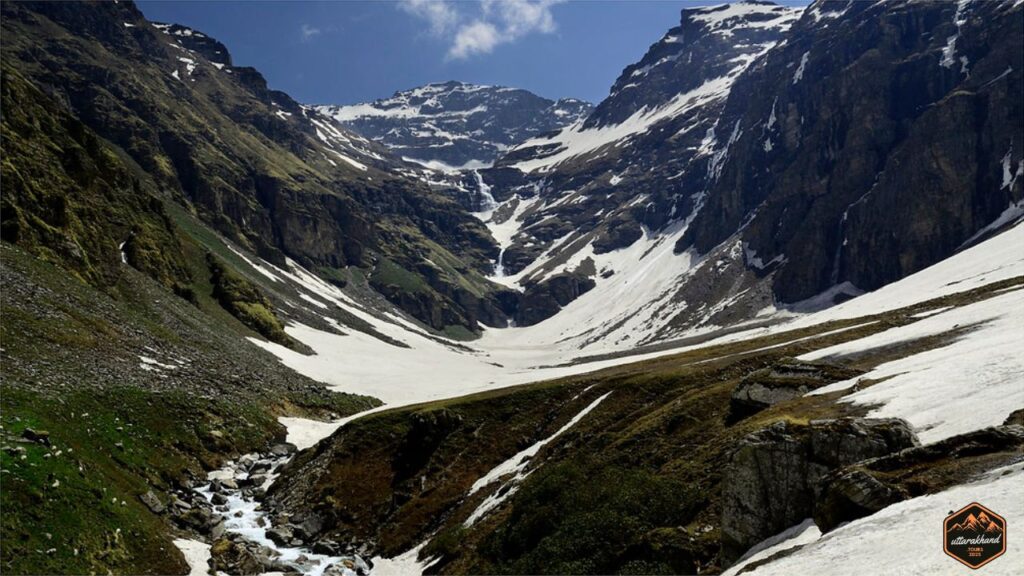
Hike 8 km to Dhanderas Thatch, and at 3,570 meters you will reach a beautiful alpine meadow called “Lower Waterfall Camp.” The path is a steep descent to a riverbed and then a hard climb through rhododendron forests. The Rupin River’s cascade of waterfalls, seen from snow bridges in early seasons, steal the show.
Nestled amidst snow-covered peaks, Dhanderas Thatch is one of the most beautiful camping spots on the trek. Set up camp, have a hot meal and stargaze in the Himalayan sky. The elevation gain requires slow pace and hydration to avoid feeling unwell, but this became a memorable stop.
Day 5: Dhanderas Thatch to Upper Waterfall Camp (Trek 3 km, 2-3 hours)
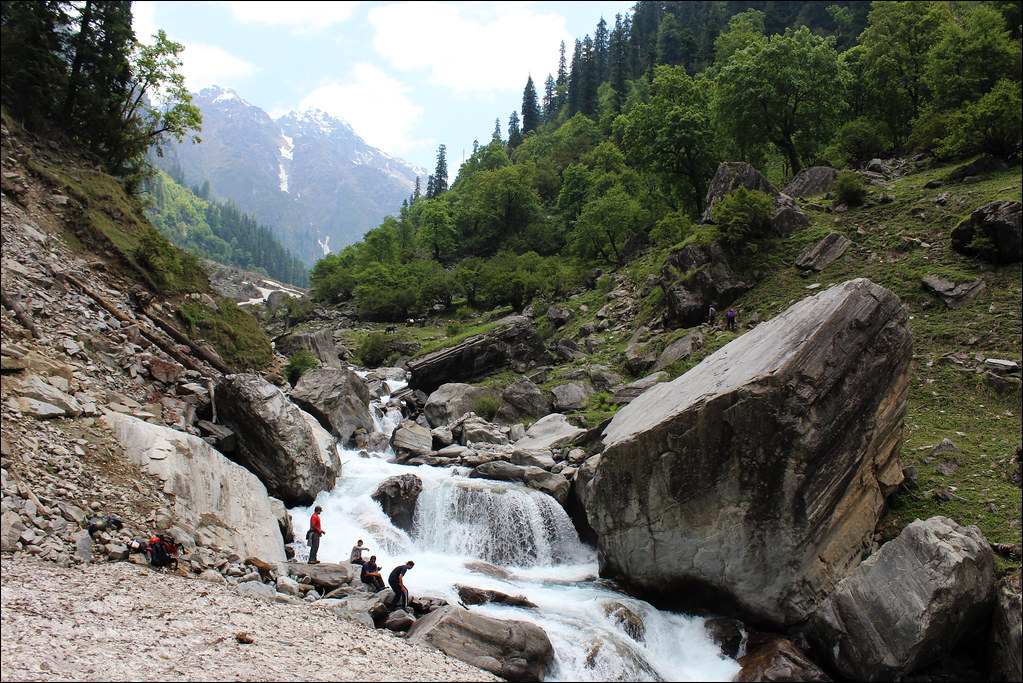
March 2 -Short trek to Upper Waterfall Camp (4,080 meters) After a leisurely breakfast and morning, we begin our trek, after only 2-2 1/2hrs walking we arrive at our camp. We trek up steeply among moraine and snow fields, exposed to breathtaking views of the Rupin River flow from a glacier.
Tucked beneath a waterfall and deep in the shadows of towering peaks, this campground provides a high-altitude escape. Spend the day sight-seeing and/or relaxing to prepare for the difficult pass ahead. The low elevation obscures the altitude’s challenges, so bring warm layers, a first-aid kit and sunscreen. Its serenity and dramatic view of the glacier make this day an ideal precursor to the trek’s final day.
Day 6: Upper Waterfall Camp to Rupin Pass to Rontigad (Trek: 12 km, 8-10 hours)
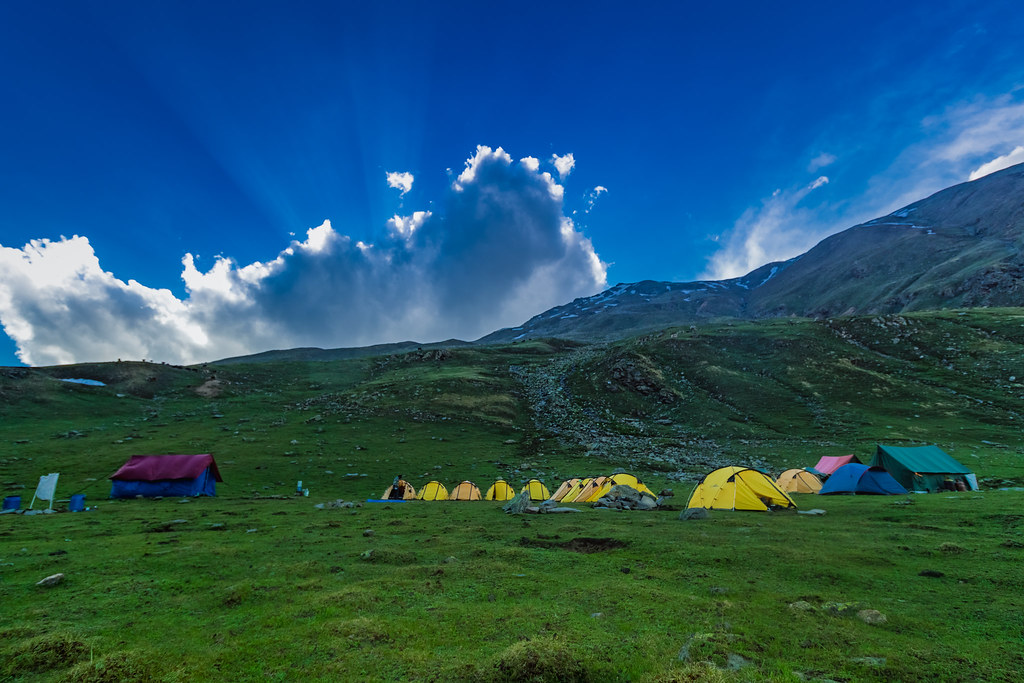
The toughest day, covering 12 km to hike from Upper Waterfall Camp to Rupin Pass, at 4,650 meters, and on to Rontigad, at 4,020 meters. Ascending the pass is a steep climb across snow slopes and rock, usually protected by a fixed rope particularly in early season.
The peak offers magnificent vistas of the Kinner Kailash range from the summit. The way down to Rontigad is long and steep going alternately through snowfields and meadows. Camp on the grassy plain at Rontigad, between peaks, and feast on a large meal for having crossed the pass. It’s a day that demands stamina, the right gear, and the guidance of a guide for safety.
Day 7: Rontigad – Sangla (Trek 7 km, 4–5 hours) – Shimla/Chandigarh (Drive 230 km, 8–10 hours)
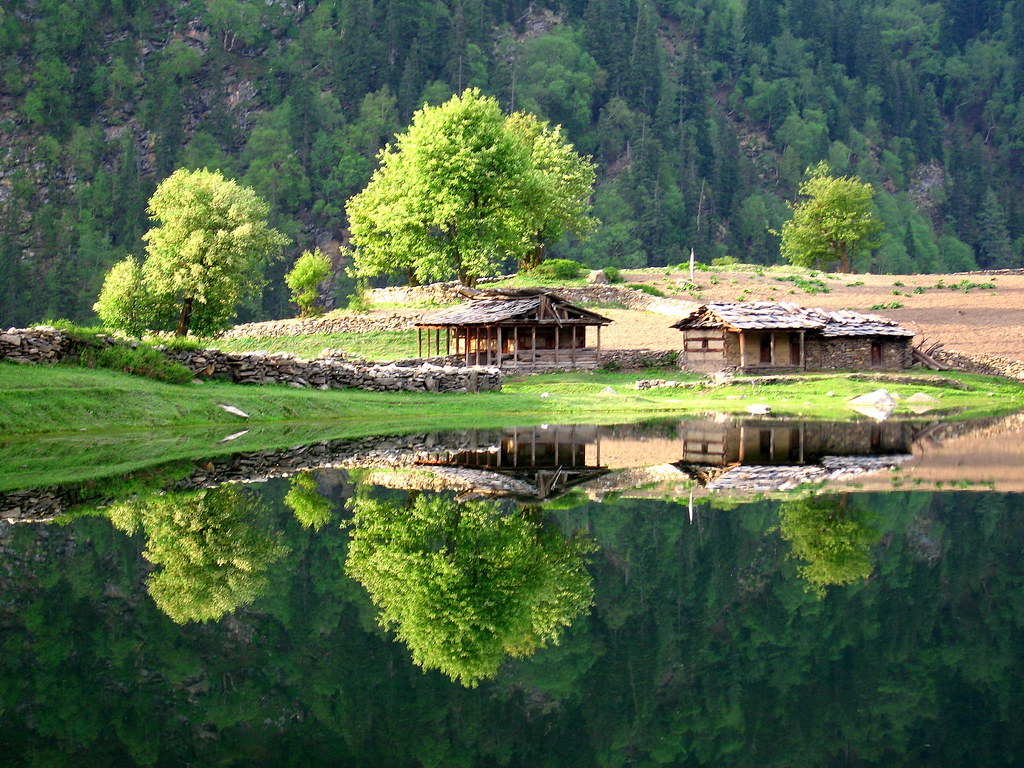
Hike 7 km from Rontigad to Sangla, at 2,680 meters, and descend through pine forests and apple orchards. The trek ended in the lively town of Sangla, nestled in the Baspa Valley. Visit the ancient Kamru Fort or shop the local markets, before heading to Shimla (230 km, 8-10 hrs) or Chandigarh (350 km, 10-12 hrs) by road. Book private taxis (INR4,000–6,000) or buses back. As you drive back through the Kinnaur valley you get excellent views to end your adventure. Overnight in Shimla,end of road journey.
The Ideal Time To Visit-Rupin Pass Trek
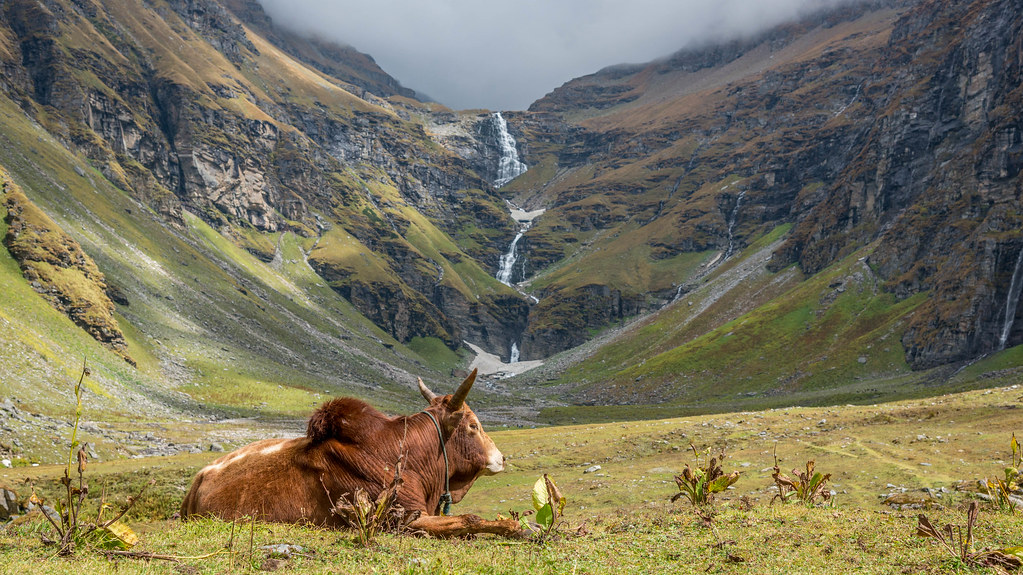
Opt the Rupin Pass Trek best in May to June and September to October. May and June are pleasant, with temperature 5–20 deg Celsius at lower elevation and 0–10 deg Celsius at the pass, but rhododendron in full bloom, snow bridges and others are beautiful. September and October is time for clear sky, temperature between 0–15°C, and colorful meadows, and to click views of Kinner Kailash.
Winters (November-April) sees closure of the pass due to heavy snow fall and Monsoons (July-August) raises the risk of landslides. Spring is the best for newcomers, autumn for photographers and experienced trekkers. First, consult the weather forecast to be prepared for a temp of -5 °C on the pass, bring layers and add waterproofs for your comfort.
Cultural and Historical Significance
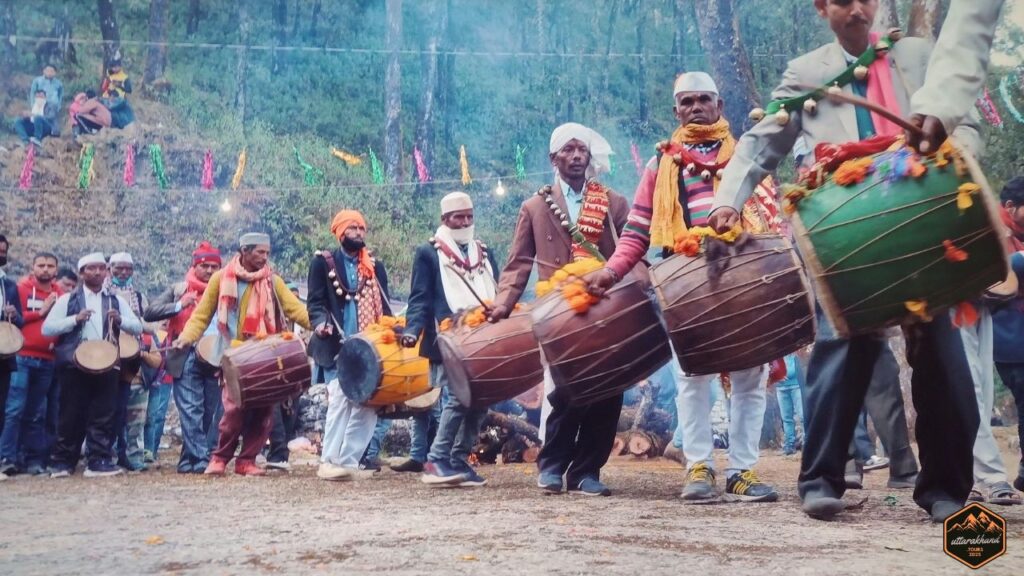
A bridge between kinnauri and garhwali culture rupin pass trek is a cultural marvel. Villages such as Sewa, and Jhaka display many of its own unique cultures, Sewa with its Wood carved Kinnaur Temple and spiritual ambience. Kamru Fort at Sangla and the Buddhist monasteries in the areas near it reflect the blend of the Kinnauri and Tibetan culture. The Rupin River is venerated by locals as a sacred lifeline, and festivals such as Kinnaur’s Phulaich Fair also include traditional music and dance.
The trek’s former life as a trade route between Uttarakhand and Himachal Pradesh lends depth; ancient shepherd trails are still in service. From interacting with locals, sampling Kinnauri apples, to walking through villages and observing traditional architecture, disallow the walk from becoming too physical, making your foray a cultural as much as nature-bound adventure.
Flora, Fauna, and Scenic Highlights
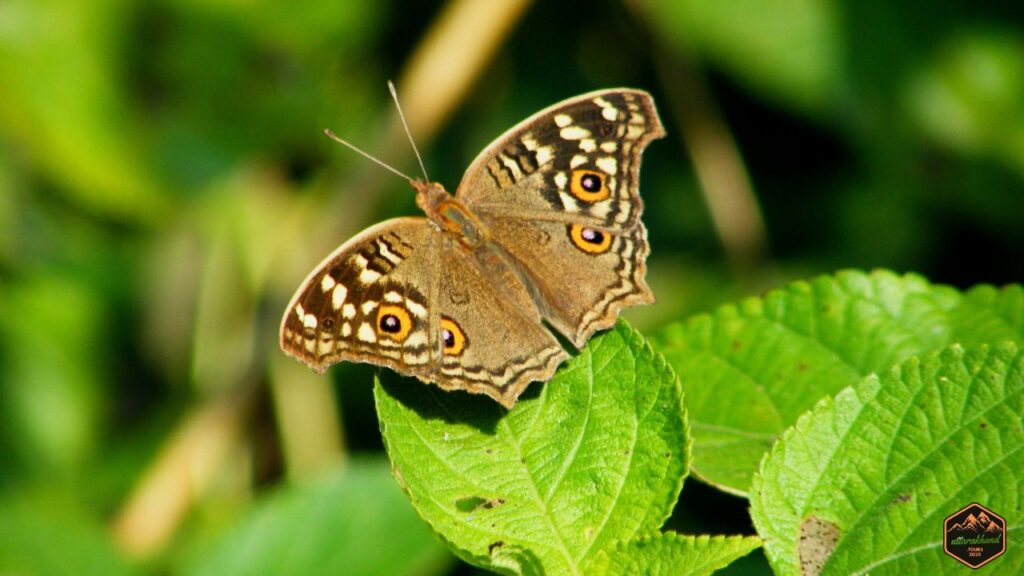
Rupin Pass Trek is through Govind National Park and is full of different natural scenery. Black and white rhododendrons and marigolds flourish in the spring and golden meadows in the fall. Birds from the Himalayas, like the Monal, and barking deer populate the pine and oak woods. The turquoise waters of the Rupin River create spectacular waterfalls and snow bridges, particularly at Dhanderas Thatch.
The Upper Waterfall Camp has spectacular views of a glacier, and the summit of the pass gives you a view of the Kinner Kailash range. The maddens such as Dhanderas Thatch and Rontigad have enough meadow space for camping under a starry sky. Photographers can be particularly entranced by the contrasts found on the trail—snowfields, rivers, and peaks—so this trek is a nature enthusiast’s dream.
Trek Difficulty and Preparation
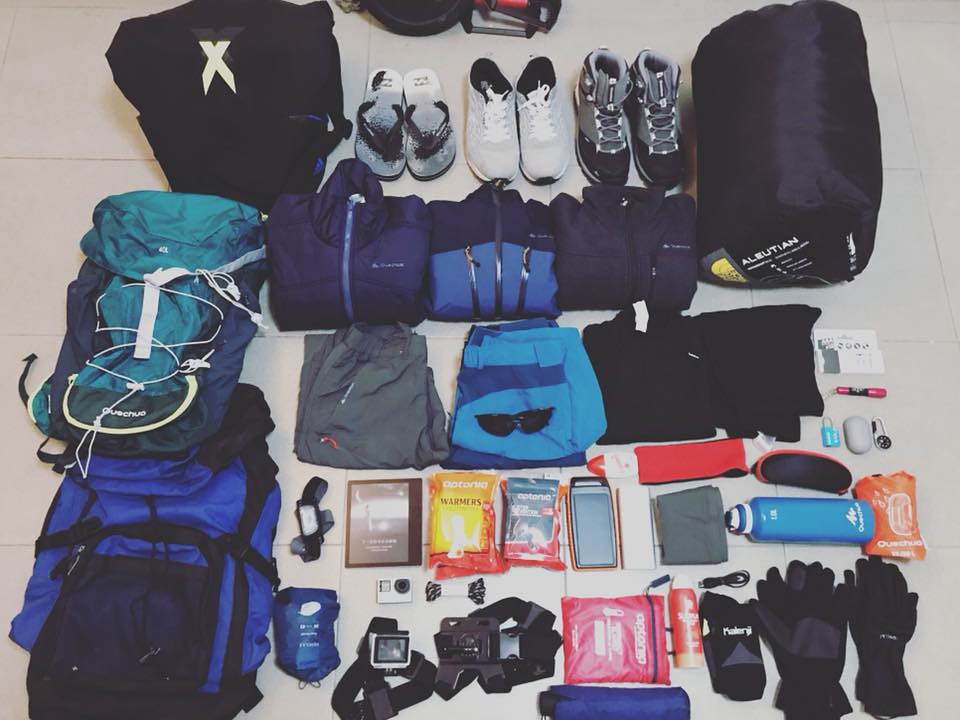
Rupin Paas Trek Difficulty Level: Moderate to Difficlut Best Time: May and October Rupin Long and challenging for the novices (52 km, 4,650 m) the trek is worth-trying. Daily climbs of 3–12 km include steep rises, snowfields or rocky terrain and demand 6–10 hours of effort. Get ready with 6-8 weeks of cardio (running, cycling) and strength moves (squats, lunges).
The necessary gears are hiking shoes, 40-50L rucksack, layered clothes(fleece, down jacket), walking poles, headlamp. Take a first-aid kit, sunscreen and a 10,000 mAh power bank, power supply is limited. Acclimatisation is key, so turn up in Dehradun a day early. Agaist the pass they would be safe when guided by agencies. With a good preparation this trail is worth the effort.
How to reach Rupin Pass trek
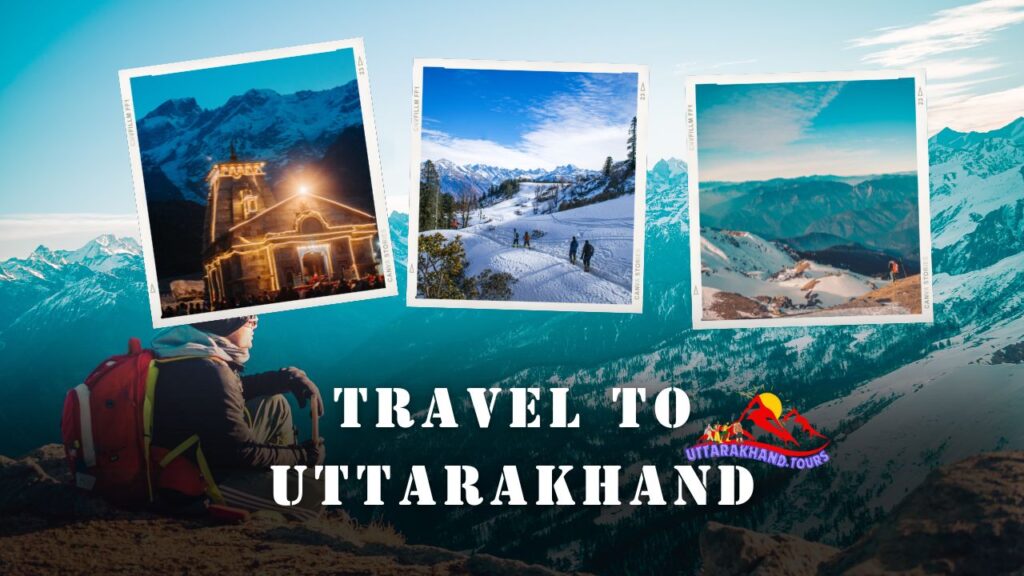
Dehradun is the starting point of Rupin Pass trek.
By Air: Jolly Grant Airport in Dehradun is the nearest airport with flight connectivity from Delhi, Mumbai or Bangalore. Take a cab (INR 3,500–5,000) or shared cab (INR 500–1,000) to Dhaula (200 km, 8–10 hours).
By Rail: Travel by train to Dehradun Railway Station by various trains such as Shatabdi Express from Delhi, and from there take a taxi or bus to Dhaula.
By Road: Dehradun to Dhaula buses and private taxis are available, which pass through Mussoorie and Purola. Some Agencies provide organized transport (INR 1,500-2,000 one way). Start early for scenic views.
Trek Cost and Inclusions
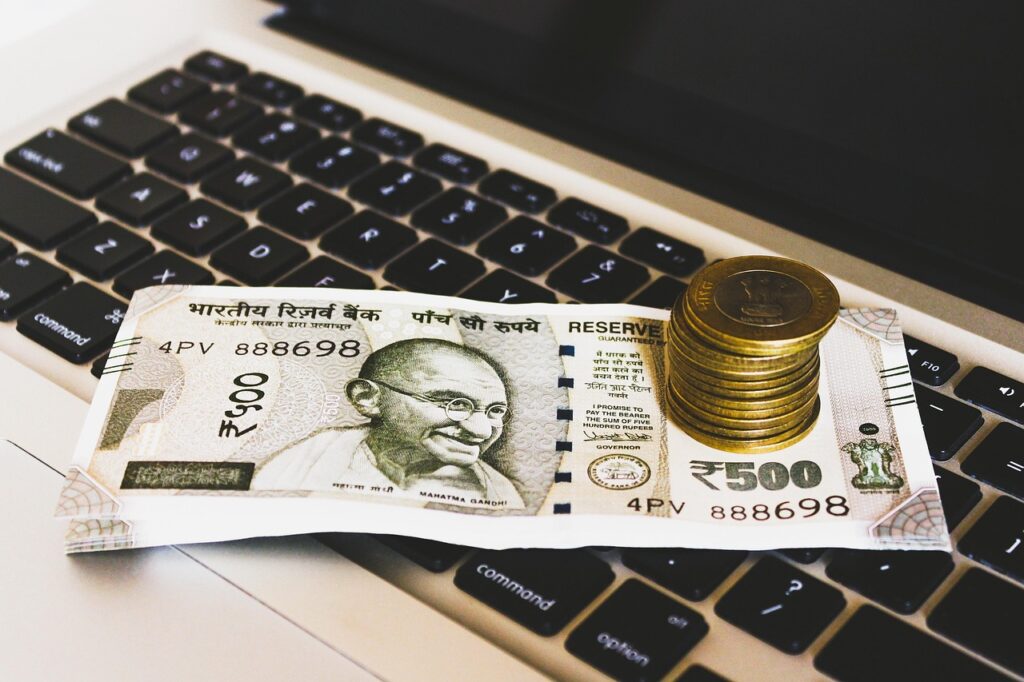
Cost: A 7–8-day Rupin Pass Trek package costs INR 12,000–18,000 per person, which covers such things as transportation from Dehradun to Dhaula, tent or guesthouse accommodation, all meals, guides, porters and permits. Additional charges could be for backpack offloading (INR 2,000–3,500) and gear rentals (INR 500–1,500).
Cost is exclusive of travel to Dehradun (flights INR 3000 to 10,000 and trains INR 500 to 2000). For a guaranteed trekking experience book with trusted services like Indiahikes, Trek The Himalayas, Bikat Adventures. Rates during high season (May–June, September–October) are far better when you book 2–3 months in advance. Purchase travel insurance for emergencies, and check out cancellation policies.
Safety Tips and Essential Gear

Get physically prepared with 6–8 weeks of cardio and strength conditioning to face the high-altitude trek. What to pack: Travel in the shoulder season necessitates the best gear you’ve got, and while every trek will require different specific gear, here are some solid basics: -Hiking shoes -Layers (consider a short sleeve, long sleeve, light fleece, rain coat, down coat) -Headlamp -Trekking poles -Water bottle -First aid kit Thermals and gloves for when it’s colder.
Obey your guides and keep to the trails and, if you need permits, bring ID. Stay hydrated and watch out for symptoms of altitude sickness, such as headaches or nausea. Look at the weather forecast, since there can be temperatures down to -5°C at the pass, and also take ponchos along with you for rain or snow. Don’t leave trash everywhere to keep the trail clean, and practice a green trek.
Conclusion
The Rupin pass Trek, a Himalayan expedition that takes you through dramatic terrain, past neighbouring mountain ranges, ancient villages and colourful temples. From cascading waterfalls of the Rupin River to the views of Kinner Kailash at the pass, this trail has something for trekkers to latch on to every hour of the day.
Best for the intermediate adventurer, its challenge is paid off with peaceful meadows and sleepy village hospitality. Follow this guide to organize your Rupin Pass Trek 2025, book with a reliable agency and pack your bags to create some unforgettable memories. Let us know what else you’re doing to prepare and leave your trekking plans or questions in the comments below.
Rupin Pass Trek FAQs
What Is the Rupin Pass Trek?
The Rupin Pass Trek is a 52-km trek which is of high altitude trek is from Dhaula, Uttarakhand to Sangla, Himachal Pradesh for 4,650 meters. Beginning from Rupin river view point offers amazing views of waterfalls, meadows, and Kinner Kailash peak views. Perfect for intermediate trekkers, this 7–8-day trek offers a mix of natural beauty and Garhwali and Kinnauri culture, visiting Sewa’s Kinnaur Temple and Jhaka village.
How to Reach the Base Camp of the Rupin Pass Trek?
Drive 200 km (8–10 hours) from Dehradun to Dhaula, the start of the trek. Fly to Jolly Grant Airport, Dehradun, or catch a train to Dehradun Railway Station and hire a taxi (3,500INR–5,000INR) or shared cab (500INR–1,000INR). Agencies offer transport (INR 1,500–2,000). An early start is advantageous for spectacular views over Mussoorie and Purola.
When Is the Best Time to Visit Rupin Pass?
The Rupin Pass Trek is ideal during May – June and September – October. Spring (May–June) is pleasant(5–20°C) and brings out the rhododendrons, Autumn ( September–October) typically has beautiful clear skies (0–15°C) and amazing meadows. Monsoons (July–August) are risky due to landslides; and winter (November–April) closes the pass.
How Difficult is the Rupin Pass Trek?
The trek to Rupin Pass is moderate to difficult and appropriate for trekkers with some prior experience. The 52km trek features steep climbs, snow slopes and a 4650m pass crossing. Start training with 6-8 weeks of cardiovascular and strength building exercises. Physical Fitness A level of fitness is required to walk 3-12km every day and ensure the best experience.
What Are the Key Takeaways of the Rupin Pass Trek?
Highlights include waterfalls on the Rupin River, alpine meadows at Dhanderas Thatch and views of Kinner Kailash from the 4,650-meter pass. Cultural gems like Sewa’s Kinnaur Temple and Jhaka, a “hanging village,” pepper the route. This trek is a visual spectacular, with snow bridges, glaciers and starry campsites.
What to Pack for Rupin Pass Trek?
Carry trekking shoes, 40-50L pack, layered wear(carry fleece and down jacket), trekking poles, head lamp, water bottle and first-aid kit. Add thermals and gloves for cooler months, sunscreen and a 10,000 mAh power bank. 8-10 kg -A Light pack, in a waterproof bag or cover.
What is the Rupin Pass Trek Price?
This 7–8-day guided package, including transportation, meals, tents, guides and permits, for the Rupin Pass Trek would cost around INR 12,000–18,000. Add INR 2,000–3,500 for offloading and INR 500–1,500 for gear hire. Plan well in advance with organizations like Indiahikes to get discounted rates.
Is Rupin Pass Trek Safe for Solo and Female Travelers?
Yes, Rupin Pass Trek is safe for solo and female trekkers as long as they are well accompanied by a guided group. Local professional guides and friendly locals in Sewa and Sangla offer safety. Stay on marked trails, carry a first-aid kit and tell someone your plan. Agencies prioritize safety for all.
What Is the Culture Being Followed in Rupin Pass?
Rupin Pass Trek is a bridge between Garhwali and Kinnauri culture. Kinnaur’s Temple of Sewa and Kamru Fort in Sangla are spiritual and architectural legacy. Villagers hold the Rupin River in deep reverence with local festivals such as Phulaich Fair, filling the trek with Kinnauri music and dance, adding a cultural dimension to the journey.
What Permits Are Required for Rupin Pass Trek?
Yes a forest permit is needed for Rupin Pass Trek – Managed by companies (part of 12,000-18,000 packages). Private trekkers will obtain permits in Purola or Dhaula (INR 150–300) based on the number along with ID proof and photographs. Observe park regulations designed to help protect the ecosystem.
“Looking for another scenic Himalayan trail? Don’t miss the Nag Tibba Trek 2025, known for its dramatic waterfall climbs and alpine meadows.”

